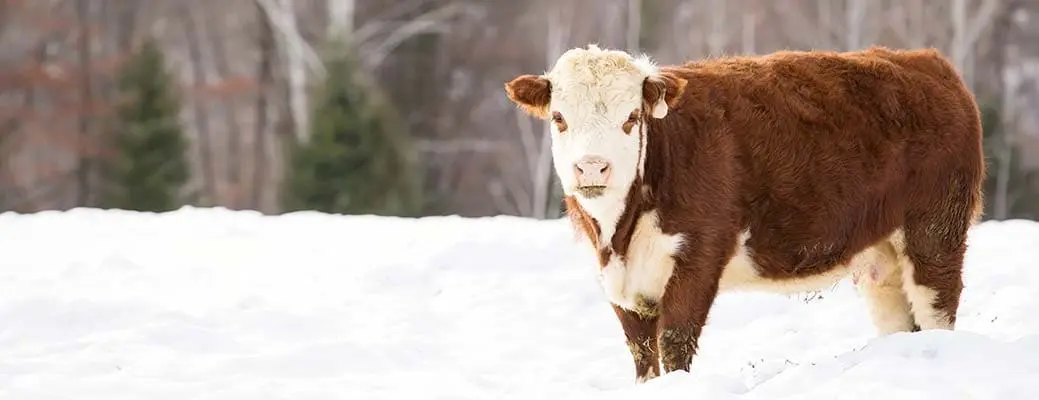How to Keep Livestock Warm in Winter


If you are a farmer or rancher, you know that extreme weather can be especially dangerous to your livestock. Here’s how to keep your herd safe all winter long.
In many parts of the country, sub-zero temperatures are not a matter of “what if” but “when.” Luckily, different types of livestock can live outside in the winter given the right circumstances. Minimize your risk and protect your herd with these winter livestock strategies.
One of the most critical factors for your herd is acclimation to the weather. Animals expected to live outside during the winter should remain outside to adjust to the changing conditions as winter approaches. This will allow them to grow a thick coat in preparation for the cold. The hair coat needs to stay clean and dry to provide the best insulation protection.
Your winter livestock will weather a storm much better indoors, so, if possible, move them to a barn or shelter that will provide warmth and protection from the wind. If you don’t have a dedicated winter shelter big enough to house the herd, consider rotating animals in and out so that no single animal is out during the worst of the conditions. For animals outside during severe weather, provide wind blocks to shield them from the biting wind or harsh rain.
Winter livestock will need increased food and water to help them maintain body temperature during extremely cold weather. Depending on the temperature forecast consider increasing your livestock’s feed in winter — for example, cattle will consume twice their normal amount to maintain adequate body temperatures during winter cold snaps.
During severe winter weather, water access can be compromised and should be checked daily to keep your animals’ water from freezing in the winter. Without adequate water access, your livestock won’t eat as much and will lose body condition. If water is unavailable for long enough, animals will attempt to eat snow, but they can’t consume enough snow to meet their water needs.
Cattle and hogs tend to develop foot problems from walking on slippery concrete after rain or snow. If your winter livestock need to stay outdoors, consider pens with gravel floors, or line pens with woodchips or even sand. Not only is this easier to navigate, but softer surfaces are also easier on joints and foot/hoof health.
Noses, ears and other parts of the body that can become wet or damp are at increased risk of frostbite. Livestock is at a danger of losing ears or tails during the coldest temps. Your livestock will need shelter in the winter if they are having a difficult time with cold temperatures.
The youngest members of your herd will have the most difficult time with extreme temperatures. Shelter the youngest livestock first and ensure their comfort.
As a farmer or rancher, your livestock is your livelihood, and you do all you can to protect animals during extreme temperatures. Your Farm Bureau agent can help you protect your livestock. Before snow flies this season, consider talking to your agent about freezing or smothering coverage in your livestock insurance, and protect yourself from herd loss if the worst happens. Prepare early and have a safe winter season.